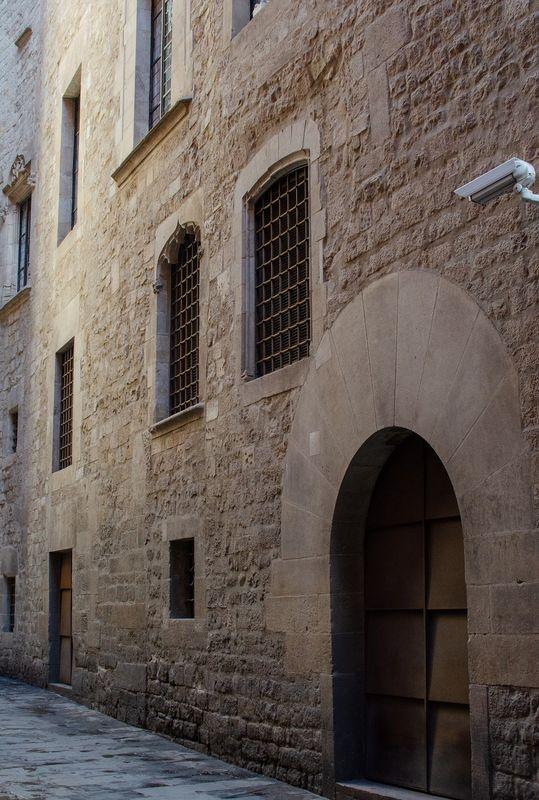This street was one the most luxurious of the Call, hosting the houses of prominent community members, doctors, head rabbis, advisors to the king and courts, and often members of the Nesi’im, leaders of the Jewish community. Prominent figures include important surgeon Bonjuha Cabrit, and Moshe Natan, chef rabbi, poet and financier. Also located on this street was an Al Funduq (corn exchange) owned by Massot Avengena. This building was a place where traveling merchants could stay and store their stock. Remains of silos for wheat, doorways for animal livestock have been found, as well as luxury items, such as coral and silk. Sites like this show the importance Jews had within the Mediterranean trade industry.
2. Sant Honorat street-in front of the map
Stories
The street of the wealthy
Entering the neighborhood
This street was one the most luxurious of the Call, hosting the houses of prominent community members, doctors, head rabbis, advisors to the king and courts, and often members of the Nesi’im, leaders of the Jewish community. Prominent figures include important surgeon Bonjuha Cabrit, and Moshe Natan, chef rabbi, poet and financier. Also located on this street was an Al Funduq (corn exchange) owned by Massot Avengena. This building was a place where traveling merchants could stay and store their stock. Remains of silos for wheat, doorways for animal livestock have been found, as well as luxury items, such as coral and silk. Sites like this show the importance Jews had within the Mediterranean trade industry.
Limits of Call
At the plaque, you can see the size of the Call located within the Roman walls of the city. The synagogue major (the main Synagogue) was located in the central area of the Call. There were several other smaller synagogues within the Call, and a few private Synagogues which meant high social status and connection to the courts as one would need permission to open one. The Mikve, ritual bath, was located within the city bathhouse on Banys Nou, where the Jewish community had access to their own bathing area. The Jewish cemetery was located 20 minutes out of the city on Montjuic.
Relationship with the King
What was the relationship the Jews had with the king? Jews were not treated as normal citizens, as their Christian neighbors, but were considered property of the King. They paid heavier taxes than Christian citizens, whose taxes went directly to the Church. Tax recuperated from the Jewish Community went directly to the King. Though the tax load was heavy, Catalan Kings aided the Jews at times of drought, fire or other disasters, granted certain privileges, such as authorizing Jews to open stores in cities. Being ‘property’ of the King also meant that they had certain protection; they had a wergild against them: if anyone damaged the King’s property, they would be punished. Kings gave the community general Autonomy, meaning they could manage legal issues within the community, having the freedom to live according to the laws of the Torah. They had their own education system, schools where Hebrew and Jewish law was taught, as well as community institutions governing the life of congregations, butchers, rabbinical schools, several Synagogues, ritual baths and a hospital. Kings, in return, took advantage of their skills and services. Catalan-Aragonese Kings had many Jews working for them as accountants, advisors, physicians and doctors.
The Call Menor.
Outlined on the plaque is the Call Menor, the smaller Call. During the 13th century there was a growth spurt within the community and space was becoming an issue, living conditions were cramped. The community asked and received permission from King Jaume II to create a second space, The Call Menor. In the 13th century, due to a rise in antisemetic laws and persecution in Europe, the Jews of Southern France were forced into exile in 1306. King Jaume II granted permission to receive some here. Most of them moved to the Call Menor. The Call Menor, located outside the Roman walls, was not a closed area, more a series of streets in which Jews and Christians shared a space. It would become a location where Conversos would live after the riots of 1391.
Powered by Clio Muse Tours
